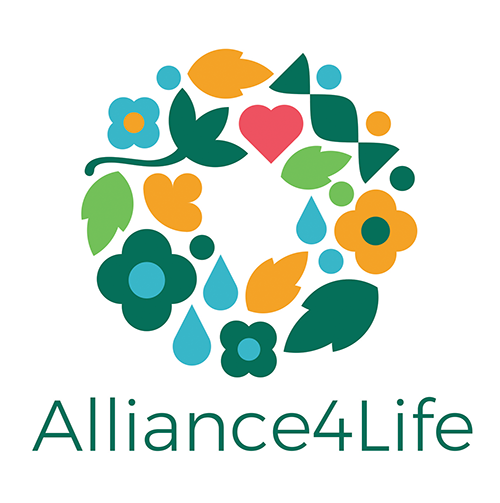
National Round Table in Hungary: Science Communication

Science communication opportunities, challenges, and a practical example, Richter Health City were the topics at the Alliance4Life Round Table organized by the Semmelweis University’s Innovation Directorate.
On December 11, an Alliance4Life national round table with the topic, "Science Communication at Universities" was organized by the Innovation Directorate at Semmelweis University in Hungary. The program, which included three lectures and a follow-up talk, was in the centre building of the University, in Semmelweis Salon.
The first lecturer, Dr. Ágnes Veszelszki, Associate Professor at the Institute of Behavioural Science and Communication Theory, Corvinus University of Budapest, presented a comprehensive view of the definition of science communication, the different audiences, and possible goals. After that, Dr. Veszelszki showed the various options with their advantages and disadvantages. She mentioned the traditional offline (e.g., magazines, newspapers) and online (e.g., websites) platforms, as well as public engagement activities; for example, science festivals or the Researchers' Night in September. The lecturer also presented new forms of science communication, such as street art, science cafes, science slams, and social media.
In his provocative presentation, Dr. habil György Fábri, Associate Professor at the Faculty of Education and Psychology, Eötvös Loránd University, presented the most important challenges of science and science communication: the low level of science literacy, the exaggerated role of rankings (especially in the media), and the antiscience movement and science skepticism. In his proposal, he drew attention to the role of community that can be built with proper communication.
Lajos János Csaba, Deputy Head of Public Relations and Government Relations at Gedeon Richter Plc. gave a presentation on their health programs. These include the Richter for Women project, with several programs, including the Richter Scientists’ Club for undergraduate and graduate physicians and pharmacists, and for supporting Hungarian teachers e.g., the Professor Rátz Lifetime Achievement Award. The lecturer discussed the Richter's largest event series, the "Richter Health City" project. Its aim is to educate the public on health issues, to promote screening programs and participation in them, and to provide financial support to hospitals. In the last 10 years, the event has reached 75 cities with nearly 200,000 visitors. Almost a quarter of the more than 150,000 screenings have detected an early stage of disease and raised $380 million in donations for hospitals.
Two questions were raised in the discussion section. The first was, Is it not too late for universities to start to educate if they miss out on communication education? According to the lecturers, the answer was no. Dr. Ágnes Veszelszki mentioned that Corvinus University holds a successful one-day course for PhD students every year. In this training, students learn how to make presentations, and get practical advice about presentation techniques. Dr. György Fábri had the same opinion, and said that it is never too late and that these skills can be acquired at a basic level. The second question, How can decision-makers and leaders be encouraged to support science communication activities? From the audience, Dr. Gyula Szigeti, Head of the Innovation Directorate, mentioned that it is inevitable if you want to receive a grant. Nowadays, most Hungarian grants contain a requirement to inform the public about scientific results. Dr. Ágnes Veszelszki also drew attention to the fact that online presence (e.g., on Facebook) has a clear impact on academic progress. More social media activities generate more citations. In addition, well-known researchers find funding easier, not to mention that they can select from the best young researchers. Dr. György Fábri also talked about ‘star-making’ and storytelling. The struggles of a researcher and the path to triumph must be shown, because that is what audiences would like to see. One of his interesting examples was setting up a camera on a lab table, so that anyone could follow the lab in real-time. Probably, it could be a huge success, a kind of lab-reality show. Of course, this requires money. Lajos János Csaba, as a PR expert, also confirmed this statement. Financial support is essential for effective science communication.
Further questions were raised at the end of the program, and there is a prospect of joint cooperation in the future.
 The project "Alliance for Life Sciences: Closing Research and Innovation Divide in the European Union" received funding from the European Union's Horizon 2020 research and innovation programme under grant agreement No. 779303.
The project "Alliance for Life Sciences: Closing Research and Innovation Divide in the European Union" received funding from the European Union's Horizon 2020 research and innovation programme under grant agreement No. 779303.

